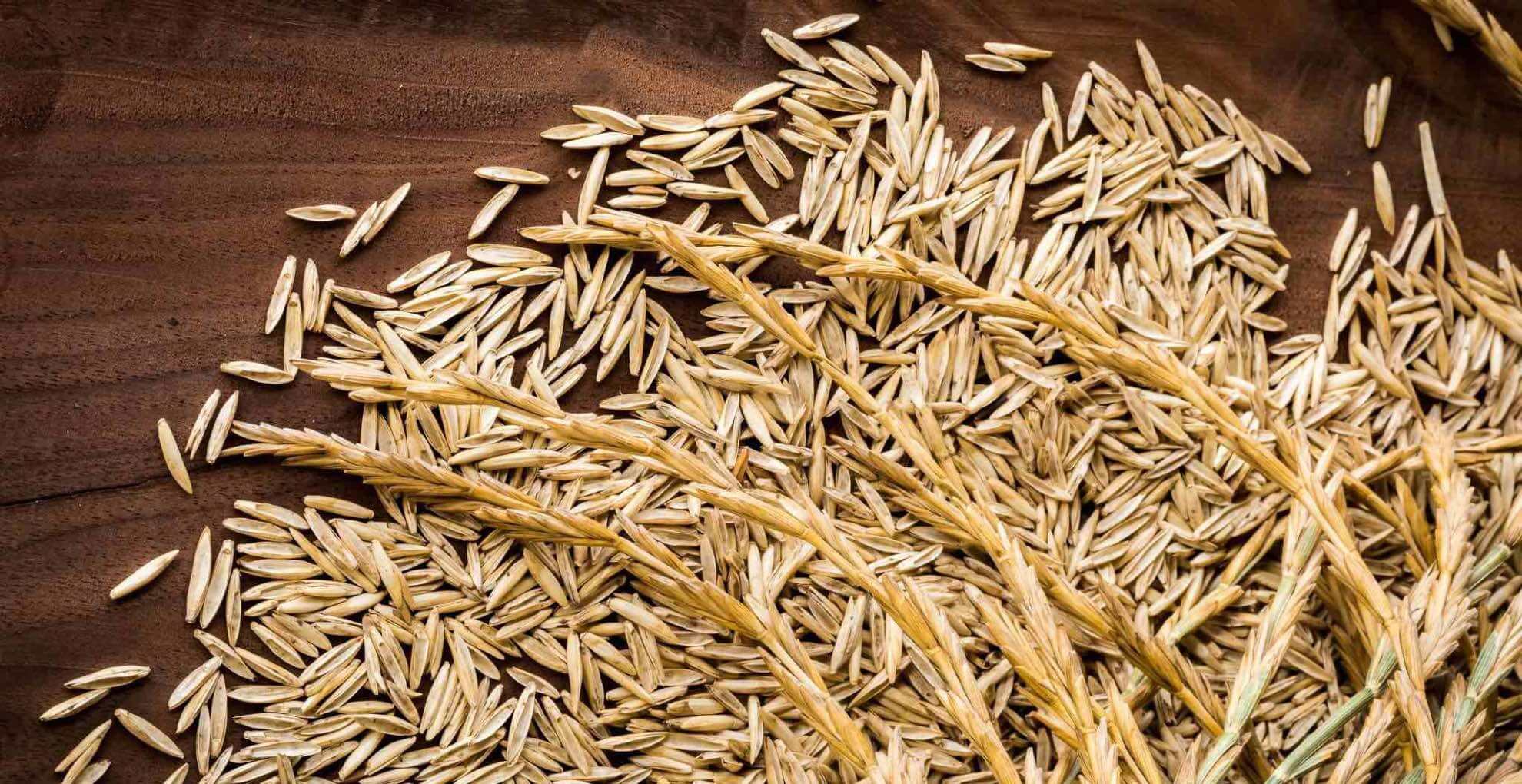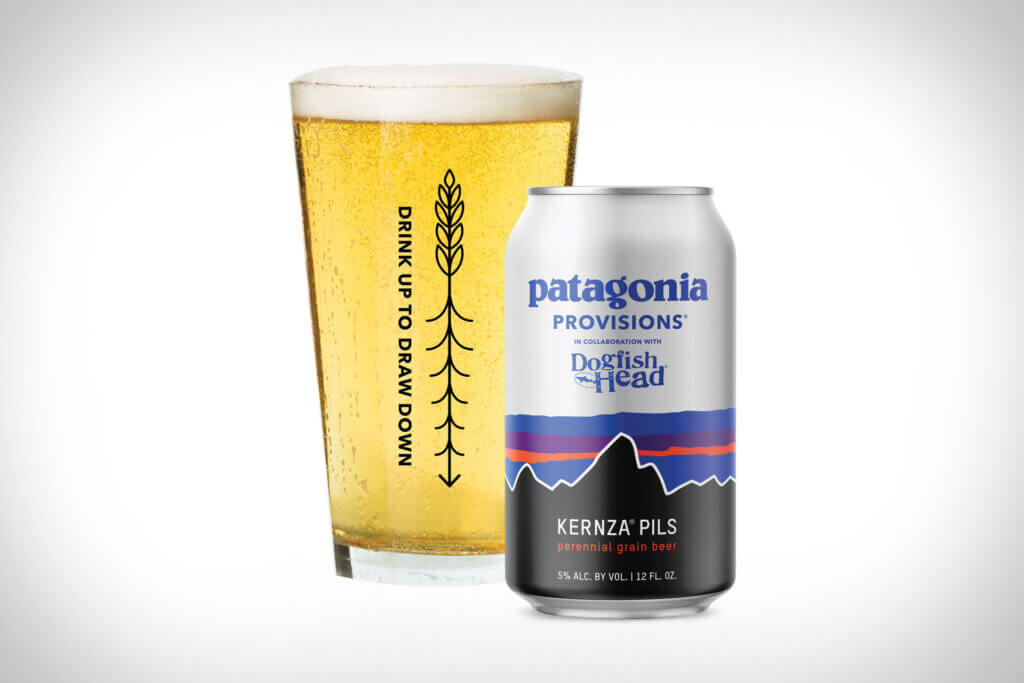
Kernza is a perennial grain, which means it grows over multiple years from the same root system. Most of the world’s calories today come from annual grains, which are seeded and harvested every year. While annuals produce vast amounts of food and livestock feed, they also fuel environmental concerns: Tilling soil each year leads to soil erosion and the loss of stored carbon, while the fertilizer applied to fields leaches into water bodies, threatening drinking water and ecosystems, and can also escape into the atmosphere as nitrous oxide gas, the third most important contributor to climate change.
Some researchers think that replacing waves of annual grains with Kernza could be an antidote to intensive agriculture. To prevent soil erosion and nitrogen loss, “it’s important to have roots growing all year,” said Priscila Pinto, an agricultural engineer studying Kernza at the University of Wisconsin-Madison.
Kernza advocates envision a sort of restoration of the prairie in the Midwest. Native prairie grasses also grow extensive roots that build soil carbon and water holding capacity and support a biodiverse grassland community aboveground. “It’s hard to imagine anything better than a plant that would do all the perennial stuff we want it to do, like the prairie did, and we could eat it],” said Lee DeHaan, lead scientist in the Kernza domestication program at the Land Institute, a sustainable agriculture-focused nonprofit.
Recently, federal funding has accelerated Kernza research and breeding programs, and some scientists say if large companies replace just a portion of their annual grain acreage with Kernza, it could make a substantial environmental impact. Consumers can already buy Kernza-containing cereal, pasta, pancake mix, and flour — often in boxes touting the grain’s climate-friendly and pollution-fighting properties. In 2022, the outdoor clothing and gear company Patagonia announced a new beer — made in partnership with Dogfish Head brewery — that would feature the earthy-tasting grain.

But whether Kernza’s potential can be realized on a meaningful scale hinges on one measure of agricultural productivity — yield per area — and some skeptics say that it’s time to stop counting on the perennial. In a recent review of published yield data, agronomists expressed doubt that Kernza can reach yields high enough to replace wheat without requiring more land to grow food. Following an initial surge in academic interest nearly two decades ago, “there’s no evidence at all that there’s been any progress,” said Kenneth Cassman, an agronomist with the University of Nebraska–Lincoln. He later added, “we have to have solutions to climate change ready to go in 10 to 20 years — we can’t wait.”
Kernza development has been in the works for about 40 years. The Rodale Institute, a nonprofit supporting organic farming, picked intermediate wheatgrass, Thinopyrumn intermedium, in the 1980s from a pool of almost 100 perennial grasses after deeming it to have the best traits for a future as a cereal crop, such as growing relatively fast and producing large seeds. In 2003, the Land Institute took up breeding efforts for the perennial grain. After several cycles of breeding, the MN-Clearwater variety became available as a cereal crop in 2019 to farmers under the Kernza trade name. The trademark is intended to protect its reputation, said Jacob Jungers, an agronomist studying Kernza at the University of Minnesota. That way, he said, a farmer can’t market a grain as Kernza unless its seed comes from the official breeding programs.
“There’s no evidence at all that there’s been any progress,” said Kenneth Cassman, an agronomist with the University of Nebraska–Lincoln.
Today, nearly 4,000 acres of Kernza are grown commercially by 36 active growers according to the Land Institute. Minnesota holds the largest acreage, followed by Kansas and Montana. In 2021, the USDA’s Natural Resource Conservation Service extended its support services to farmers planting Kernza in order to improve soil health. The increased interest and acreage has been buoyed by a $10 million USDA grant toward a research project with 10 university partners as well as 24 non-profits, farms, and food organizations. The collaboration is focused on breeding, growing, marketing, supply chain, and food science research (that’s the maximum amount given for sustainable agriculture grants). Nicole Tautges, an agroecologist with the Michael Fields Agricultural Institute who is on the agronomy and on-farm knowledge team for the project, said the team hopes to increase acreage by 10 times over the next couple years.
To bring Kernza into greater production, researchers across five Kernza breeding centers are hoping to make progress on measures of yield. According to the Land Institute, Kernza grown today averages 409 pounds of grain per acre, an improvement from early generations producing 100 to 200 pounds per acre. But today’s yields are still less than a quarter of comparable wheat yields.

Breeders say they are making consistent progress, though. To demonstrate increases in yield, DeHaan sent Undark two papers: a chapter he wrote for a 2013 FAO report and a 2020 report prepared for the Cereal & Grains Association (both non-peer reviewed publications). The former reported that in two generations of selective breeding, Kernza seed yield had grown 77 percent. At this rate, Kernza could match annual wheat yields in Kansas after 12 more generations, the team stated. The other report included a figure showing grain yield increasing 144 percent over five cycles, with the last generation having yields above 400 pounds per acre.
But Cassman was not impressed, calling some of the data “misleading.” For example, he wrote in an email to Undark that the authors compared rain-fed annual wheat yields to irrigated Kernza yields, noting that this comparison is “quite a ‘slight of hand.’” Cassman said the rates of improvement depend heavily on initial yield data. Nearly all of the 77 percent increase came from the first year of improvement, which started with a “very, very low” yield of 350 pounds per acre, he added, so claiming a steady increase is misleading.
In Cassman’s review of peer-reviewed yield data on Kernza and other perennial grains, he found six studies published since 2005 that “provide sufficient detail about plot size and harvest methods to determine if reported yields are reasonably representative of production-scale crop stands.” In the paper, he presented data on first, second, and third year Kernza yields along comparable wheat yields — and the best yield was only 24 percent of a comparable wheat yield. The yields also tended to decline in the third year.
“We’re not saying everyone needs to switch over to Kernza now, but to not invest in it as one of the important tools in our toolkit for improving agricultural sustainability seems unthinkable at this point,” said Tautges.
Cassman and his coauthor, David Connor of the University of Melbourne, concluded that they saw “little evidence that yield of Intermediate Wheatgrass or perennial wheats have improved to the point they are viable alternatives.” (DeHaan declined to comment directly on the review because, at the time, he was working on a rebuttal article.)
This is a blow for Kernza as a more sustainable crop, Cassman said, because yields must be close to annual wheat to avoid having to convert more natural land into agriculture. Compared to annual wheat, “if yields are only 20 percent, and you’re proposing it as a substantial solution to annual grain production, it means you need 80 percent more crop area,” he said. “And, of course, that’s not even a feasible proposition today with limited land and water resources.”

While Cassman isn’t against “Kernza as a niche crop for high-end health food markets,” he added, he doesn’t think it could be a large-scale solution to environmental problems in agriculture.
Some experts also think that perennial grains in general are unlikely to reach the yields of annuals — even with improved breeding. Annual grains grow like weeds to “live fast, die young,” said Chris Smaje, the owner of a small farm in Somerset, England and author of a 2015 review on the trade-offs of perennial agriculture. These crops devote much energy from the sun into forming seeds for the next generation (and thus ensuring harvests for humans), but perennials invest more in roots and shoots with less attention to maximizing annual seed production, said Smaje.
Still, Kernza breeders say they are making consistent progress. The early decades of breeding were stymied by limited funds, said DeHaan. After breeding began in greater earnest in 2003, he added, new generations have improved in yield per area, shatter resistance (not dropping seeds on the ground prior to harvest), free-threshing seeds (making them easier to remove from the hull), and seed size.
New breeding technologies, such as genomic selection, are shortening the time between Kernza generations and allowing researchers to rapidly improve traits like yield, said Jungers. DeHaan said he’s been able to shorten the breeding cycle from five years down to one year — and wants to speed it up even more. If Kernza is indeed increasing its yields with every breeding cycle, that means it can now make faster progress than before. “My extrapolation is that we could reach the current yield of wheat in Kansas within about another 17 years of breeding,” said DeHaan.
Yields have increased in the Land Institute’s breeding program over time and their scientists are optimistic that this trend will continue to improve with the right resources. “We’re not saying everyone needs to switch over to Kernza now, but to not invest in it as one of the important tools in our toolkit for improving agricultural sustainability seems unthinkable at this point,” said Tautges.
Critiques that point out the lack of peer-reviewed data are valid, she said, but Kernza breeding programs are small and researchers have limited resources to dedicate to publishing papers on yields. And while Kernza yields decline after three years, Tautges said the crop can still be profitable for both harvesting and as livestock forage. Even if farmers replant Kernza after three years, Jungers said that’s enough time to improve the soil and water quality.
Even so, Cassman said, current yields are still far too low to replace wheat. A 2010 economic analysis conducted by Australian researchers found that perennial grain yields must be around 40 to 65 percent of annuals to be profitable.
Back in Montana, Engellent said his Kernza yields, grown organically, have thus far yielded about 350 pounds per acre (though he’s added that he’s hopeful a more recent batch of seed will do better). Organic annual spring wheat yields in the area are around 1,500 pounds per acre, but Engellent said it’s better to compare the two crops on a longer timescale because annual wheat is rarely planted in back-to-back years; farmers rotate annual crops to maintain soil fertility, whereas Kernza can be harvested every year. Even so, since he can sell the grain at a premium — primarily to Patagonia — and make additional money through baling it for hay, he said he’s made a profit on his 260 Kernza acres.
But Engellent said Kernza still won’t replace annuals at a large scale without a boost to yields. To break out of the niche market, the perennial grain needs to be competitive with annual crop yields, he said. “I certainly hope that it can become more mainstream, because it is a great tool for not only just taking care of but helping improve the land.”
Ula Chrobak is a freelance science writer based in Nevada. You can find more of her work at her website.
A version of this article was posted at Undark and is used here with permission. Check out Undark on Twitter @undarkmag
































